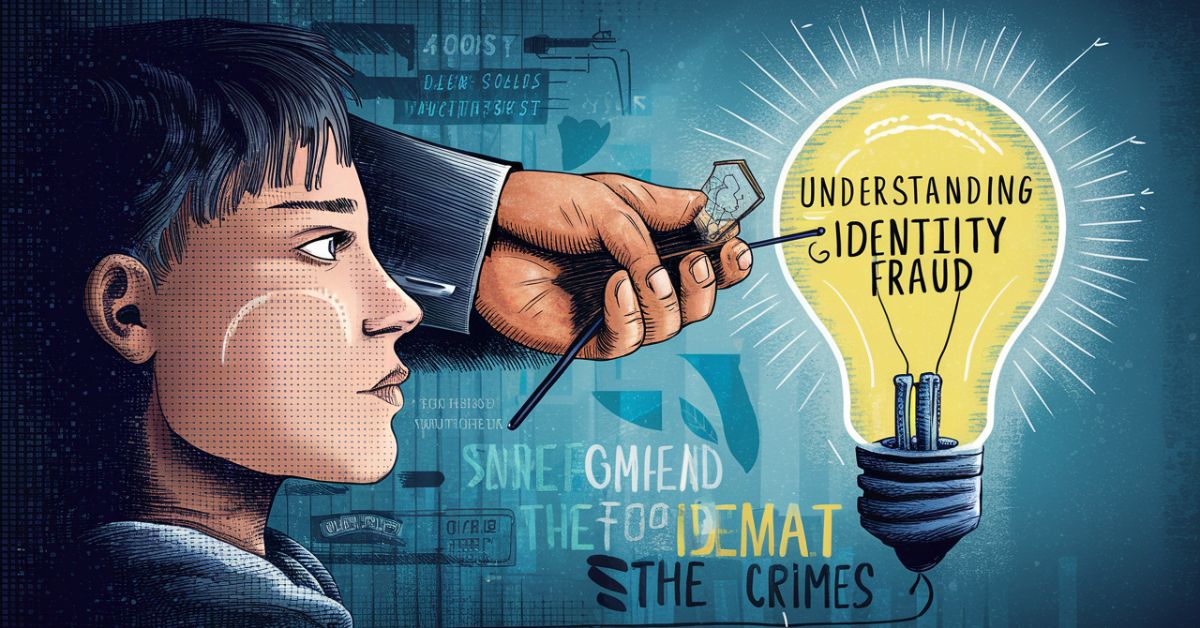In today’s digital age, identity fraud has become an increasingly prevalent concern. Like looking into a mirror and seeing a distorted reflection, victims of identity theft often find themselves facing a warped version of their financial and personal lives. This comprehensive guide will walk you through the steps to take when you’ve fallen victim to identity fraud, helping you reclaim your identity and secure your future. Where to Go From the Mirror in Identity Fraud?
Key Takeaways
- Act swiftly: Time is of the essence when dealing with identity fraud.
- Protect your accounts: Freeze credit reports and change passwords immediately.
- Alert authorities: Report the incident to law enforcement and the FTC.
- Monitor vigilantly: Keep a close eye on your credit reports and financial statements.
- Prevent future incidents: Implement strong security measures to safeguard your identity.
Understanding Identity Fraud
Identity fraud occurs when someone uses your personal information without your permission, typically for financial gain. This can include using your credit card details, opening new accounts in your name, or even claiming your tax refund. The “mirror” in identity fraud represents the moment of realization – when you see the reflection of your compromised identity and must decide how to proceed. Where to Go From the Mirror in Identity Fraud?
Common types of identity theft include:
- Financial identity theft
- Medical identity theft
- Criminal identity theft
- Synthetic identity theft
“Identity theft is not a question of if, but when. The best defense is a good offense.” – Frank Abagnale, former con artist and FBI consultant
Recognizing the Signs of Identity Theft
Being able to spot the red flags of identity theft early can save you significant time and stress. Here are key indicators to watch for:
- Unexpected drops in your credit score
- Unfamiliar accounts or charges on your credit report
- Receiving bills or collection notices for accounts you didn’t open
- Being denied credit for no apparent reason
- Suspicious activity on your tax return
Case Study: Sarah, a 32-year-old teacher, noticed a $5,000 charge on her credit card statement for electronics she never purchased. This prompted her to check her credit report, where she discovered two new credit card accounts opened in her name. Sarah’s swift action in reporting these discrepancies helped her recover more quickly from the identity fraud incident.
Taking Immediate Steps to Protect Yourself
Once you’ve identified potential identity fraud, it’s crucial to act quickly to mitigate the damage. Follow these steps:
- Freeze your credit reports: Contact all three major credit bureaus (Equifax, Experian, and TransUnion) to place a security freeze on your credit reports.
- Change all passwords and PINs: Update login credentials for all your online accounts, especially financial ones.
- Enable two-factor authentication: Add an extra layer of security to your accounts where possible.
- Review financial statements: Carefully go through recent transactions on all your accounts.
| Credit Bureau | Phone Number | Website |
|---|---|---|
| Equifax | 1-800-349-9960 | www.equifax.com/personal/credit-report-services |
| Experian | 1-888-397-3742 | www.experian.com/freeze/center.html |
| TransUnion | 1-888-909-8872 | www.transunion.com/credit-freeze |
Reporting Identity Fraud to the Authorities

Reporting the crime is a crucial step in addressing identity fraud. This not only helps in potentially catching the perpetrators but also provides you with official documentation of the incident.
- File a police report: Contact your local law enforcement agency to file a report. Request a copy for your records.
- Submit a complaint to the FTC: Visit IdentityTheft.gov to file an official complaint and get a personalized recovery plan.
- Document everything: Keep detailed records of all communications, including dates, names, and actions taken.
Contacting Credit Bureaus and Financial Institutions
After securing your accounts and alerting authorities, it’s time to work with credit bureaus and financial institutions to rectify the situation.
- Place fraud alerts with major credit bureaus
- Dispute any fraudulent transactions or accounts
- Contact your banks and credit card companies to secure existing accounts
- Request new cards and account numbers if necessary
Pro Tip: When disputing fraudulent charges or accounts, always communicate in writing and send letters via certified mail with the return receipt requested. This creates a paper trail and proves the company received your dispute.
Rebuilding Your Credit and Restoring Your Identity
Recovering from identity fraud can be a lengthy process, but with persistence, you can restore your good name and credit standing.
- Obtain and review your credit reports from all three major bureaus
- Dispute any inaccurate information using the official dispute processes
- Create an identity recovery plan, prioritizing the most serious issues first
- Consider working with a credit counselor or identity theft specialist if you feel overwhelmed
Preventing Future Identity Fraud

While there’s no foolproof way to prevent identity theft, you can significantly reduce your risk by implementing strong security measures:
- Use complex, unique passwords for each account
- Regularly monitor your credit reports and financial statements
- Be cautious about sharing personal information online or over the phone
- Shred sensitive documents before disposing of them
- Keep your computer and mobile devices updated with the latest security software
Frequently Asked Questions
Q: How Do I Know if My Personal Information Has Been Compromised in an Identity Fraud Incident?
Signs of compromise include unexpected changes in your credit score, unfamiliar accounts or charges on your credit report, and receiving correspondence about accounts or applications you didn’t initiate. Regularly monitoring your credit report and using identity theft protection services can help you spot potential issues early.
Q: What Are Some Common Techniques Used by Identity Thieves to Obtain Personal Information?
Identity thieves employ various methods to steal personal information, including:
- Phishing emails and websites
- Data breaches of companies holding your information
- Skimming devices on ATMs or point-of-sale terminals
- Dumpster diving for discarded documents
- Social engineering tactics to trick you into revealing information
Q: Can I Recover Any Financial Losses Incurred Due to Identity Fraud?
In many cases, yes. The Fair Credit Billing Act limits your liability for unauthorized credit card charges to $50. For debit cards, your liability is limited to $50 if you report the fraud within two business days, and up to $500 if you report within 60 days. Many financial institutions have zero-liability policies for fraudulent charges. Work closely with your bank or credit card company to dispute unauthorized transactions.
Q: How Long Does It Typically Take to Restore Your Identity After an Identity Fraud Incident?
The time it takes to fully recover from identity theft varies depending on the complexity of the case. Simple cases might be resolved in a few weeks, while more complex situations can take months or even years. Factors affecting recovery time include the type of identity theft, how quickly it was discovered, and how proactive you are in addressing the issue.
Q: Are There Any Legal Actions I Can Take Against the Perpetrators of Identity Fraud?
While it’s possible to pursue legal action against identity thieves, it can be challenging. Law enforcement agencies may investigate and prosecute identity theft cases, especially those involving large-scale fraud. You may also have the option to file a civil lawsuit against the perpetrator for damages. However, identifying and locating the perpetrator can be difficult, and they may not have the means to pay restitution even if found.
Conclusion
Facing identity fraud can feel like looking into a distorted mirror, but with the right steps and persistence, you can restore your true reflection. Remember to act quickly, report the fraud, work with credit bureaus and financial institutions, and take measures to prevent future incidents. By staying vigilant and informed, you can protect yourself from the devastating effects of identity theft and maintain control over your personal and financial information.
For ongoing support and information, consider resources like the FTC’s IdentityTheft.gov website, consumer protection organizations, and identity theft support groups. Remember, you’re not alone in this journey, and with the right approach, you can successfully navigate the challenging waters of identity fraud recovery.



